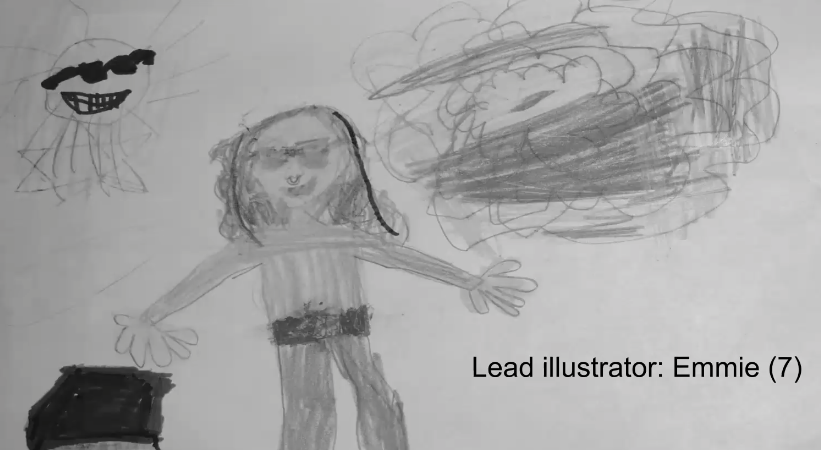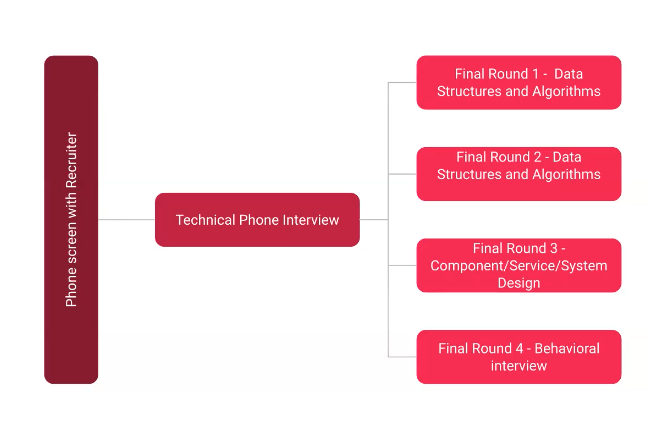Technical interviews can be overwhelming during your first, second or even third job search in the tech industry, but they don’t have to be! Ask any senior developer and they will tell you that proper preparation is the key to a successful technical interview. In a recent Nashville Software School (NSS) Seekers meeting, Software Engineering instructor, Gabe Cziprusz, presented a fun and informative preparation guide for the graduates to use during their job search for technical interviews!
Gabe began the presentation by introducing the seekers to a fictional protagonist named Tina, a software engineer who transformed her career by adopting a strategic approach to interview preparation. Let’s explore Gabe’s example of Tina's technical interview preparation journey and her comprehensive 5-step guide to help you excel in your next technical interview!
Chapter 1: Tina's Defeat and Determination

Once upon a time, in a land of software engineering, there lived a talented young woman named Tina. Tina was a skilled software engineer who dreamed of building amazing applications and contributing to groundbreaking projects. However, her dreams were dashed when she faced defeat during her job search.
After several rounds of technical interviews, Tina had failed to secure a job. Feeling discouraged, she decided that it was time to change her approach. She realized that she needed plan to help her excel in technical interviews and transform her career.
Chapter 2: Understanding the Tech Interview Process
Determined to succeed, Tina embarked on a journey through the forest of research to understand the role of technical interviews.

Through her exploration, she discovered that the interview process usually starts out with a call from a company recruiter. Tina felt confident that she could answer the recruiters questions about her prior experience.
After the recruiter, interviews get more technical. This often includes a conversation with the hiring manager and/or teammates, and one or more technical coding interviews. The coding interviews can be hard without the right type of preparation. She learned that the coding interviews would be different based on seniority level, but have some similarities. For example, the system design rounds will be some combination of component service or system design where she has to clarify requirements and then assemble a system that meets those requirements.
She also learned that a typical tech interview can have up to 4 to 5 technical rounds. Given the average tenure of a software engineer was approximately two years, she would face many technical interviews during her career.
Armed with this knowledge, Tina recognized the importance of honing her skills for a prolonged career and that a comprehensive preparation plan was essential to succeed in technical interviews to get the job offer.
Chapter 3: Creating a Preparation Schedule
To tackle the overwhelming number of technical interviews she anticipated, Tina developed a structured schedule that would give her adequate time to prepare. Recognizing the significance of practice, she set aside dedicated sessions with realistic time frames to ensure she had ample free time and breaks for relaxation to simulate technical interviews, practice coding challenges, and stay up-to-date on industry trends. With her preparation schedule in place, Tina was ready to take on the challenges that lay ahead.
Chapter 4: Simulating Technical Interviews with Peers
While her practice sessions were building her confidence, Tina knew that her nerves would surface whenever someone was watching her code. That’s when she discovered Pramp, a free tool that facilitates practice sessions with peers. Through Pramp, she began to schedule interviews for various topics, such as data structures, algorithms, system design, front-end development, and applied data science. Once matched with a peer, she could access the interview questions provided by the platform.
Detailed question descriptions, helpful hints from other candidates, and suggested solutions empowered Tina to effectively assist her peers during practice sessions. After each session, she evaluated her own performance and provided feedback on her peer's performance. This iterative process helped Tina track her progress and identify areas for improvement. Tina began to get excited about her dreams again!
Chapter 5: 5 Steps To Solving A Code Challenge
As Tina was becoming more comfortable with her interviewing skills, she recognized the need to sharpen her coding fundamentals. She turned to LeetCode, a magical platform that allowed her to practice algorithmic problems. To solve these problems, Tina created a five-step approach to use no matter how easy or hard the problem seemed. Could this be the magic formula for excelling in her technical interviews?
5 Steps to Solving a Code Challenge: clarify, plan, implement, test, and optimize.
Tina learned to clarify the problem by asking questions to understand the requirements fully. She then planned her approach by breaking down the problem into logical steps. Next, she implemented her plan by writing clean and readable code, following best practices.
Testing was a crucial step for Tina to practice. She designed and executed various test cases to validate the correctness and robustness of her solutions. Finally, Tina sought opportunities to optimize her code, making it more efficient and scalable.
Regardless of the question's difficulty, Tina used these 5 guiding steps to help her consistently come to solutions.
CLICK HERE TO TRY IT FOR YOURSELF!
Chapter 6: Continuous Learning and Improvement
Tina understood that technical interviews are constantly evolving and staying up to date with industry trends was crucial. She decided to dedicate time each week to expand her knowledge base by reading technical articles, participating in coding challenges, and engaging in online communities.
Tina’s confidence continued to build as she adapted to new technologies and showcased her ability to learn and grow. Her determination, combined with her comprehensive 5-step guide, had transformed her from a defeated interviewee to a technical interview champion!
Epilogue: Tina's Triumph
With her newfound skills and knowledge, Tina embarked on a fresh round of technical interviews. This time, she approached each interview with confidence, showcasing her expertise and problem-solving abilities.
Thanks to her strategic preparation, Tina excelled and received multiple job offers from prestigious companies, each eager to have her join their ranks. With her dreams finally coming true, Tina proved that with determination, dedication, and a strategic approach to interview preparation, one could overcome any code challenge.
And so, Tina's journey from defeat to triumph has become an inspiration for all in the land of software engineering. Remember, dear reader, as you embark on your own technical interview journey, follow Tina's footsteps and embrace the power of preparation. May the technical interviews be ever in your favor!
TRY IT FOR YOURSELF!
Here’s the outline of Tina’s 5 steps for you to try during your next technical interview:
CLARIFY
Ask clarifying questions and identify edge cases to gain a comprehensive understanding of the problem. Before jumping into the solution, it's crucial to clarify any ambiguities surrounding the problem statement. Some of the questions to ask include:
-
- Are the inputs always populated, or can we encounter an empty array?
- Can we assume there will always be a valid solution?
- Should we return all possible solutions or just one?
- Are duplicate indices allowed in the output?
By asking these clarifying questions, you demonstrate a proactive approach to problem-solving, ensuring a clear understanding of the problem's requirements
PLAN
Take time to fully comprehend the problem at hand and carefully analyze the requirements and constraints. Consider different approaches and strategies to tackle the problem. Devise a clear plan of action, breaking down the problem into logical steps or subtasks, which will serve as a roadmap for the implementation phase.
IMPLEMENT
Once the plan is established, translate the plan into code, ensuring clean and readable syntax. Follow coding best practices and adhere to the chosen programming language's conventions and style guidelines. Focus on writing efficient and maintainable code, ensuring that your solution accurately addresses the problem's requirements.
TEST
Testing is a crucial step to validate the correctness and robustness of the implemented solution. Design and execute test cases that cover a wide range of inputs, including normal and edge cases and verify if the solution produces the expected outputs and handles exceptional scenarios gracefully. The aim of comprehensive testing is to identify and rectify any bugs or logical errors, ensuring the solution performs reliably in different scenarios.
OPTIMIZE
Seek opportunities to improve the solution's efficiency. Analyze the code and algorithms used. Consider factors like time complexity and space complexity and explore alternative approaches and data structures that could potentially enhance the solution's performance. Applying optimization techniques, such as algorithmic improvements or memory management strategies can help you to achieve a more efficient and scalable solution.







